[CASE] How we scanned Rolls-Royce Wraith for tuning
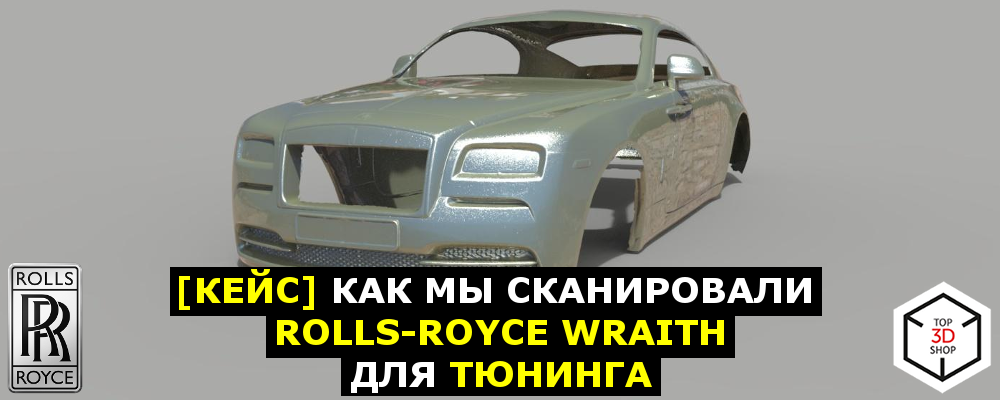
What is the article about?
We talk about 3D-scanning for subsequent tuning and customization on the example of the car Rolls-Royce Wraith.
Our company often provides services for scanning cars and their elements. The last such order was a Rolls-Royce Wraith scan for a tuning studio in St. Petersburg.
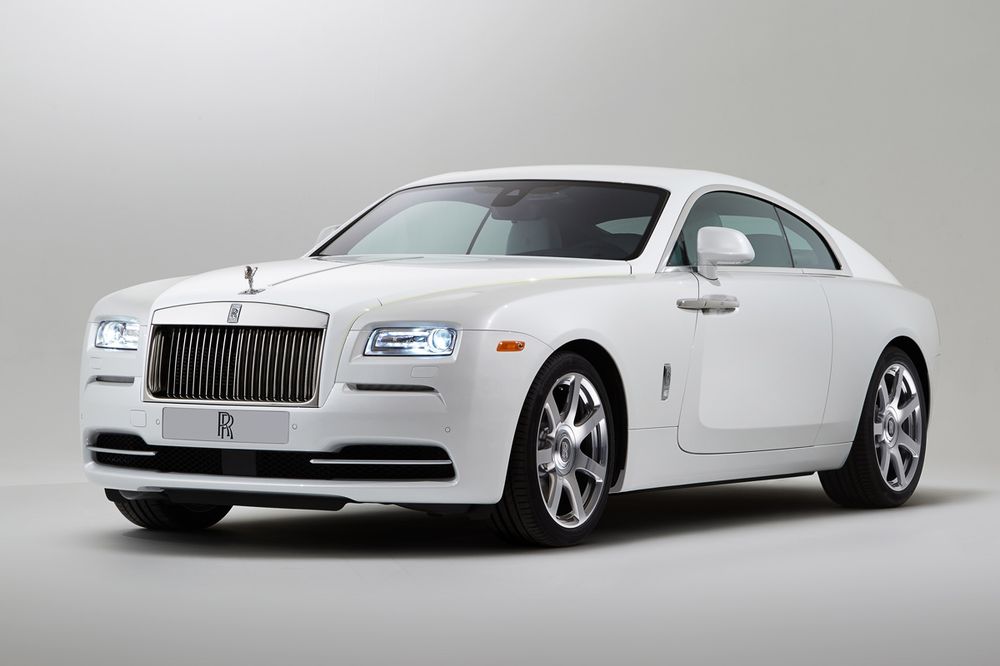
It was necessary to scan the car body, for the subsequent processing of the digital model by the designer - the modeling of additional elements.
It was decided to scan using an Artec Eva handheld 3D scanner.
Artec Eva

- Linear field of view, mm: 214 × 148 - 536 × 371
- Accuracy, micron: 100
- Color: yes
- Price: 945 300 rub.
We could use the RangeVision PRO 5M stationary 3D scanner, and it would give greater surface accuracy, but scanning large objects with a hand scanner can be much faster, and Artec Eva gives you a target surface accuracy of 1-2 millimeters without problems.
To make it clearer, why speed matters here: scanning with a hand scanner took, along with preparation, about 3 hours, the stationary would have coped with the hours in 6-7.
In Top 3D Shop a wide range of scanners for any purpose, please, we will be happy to help with the selection.
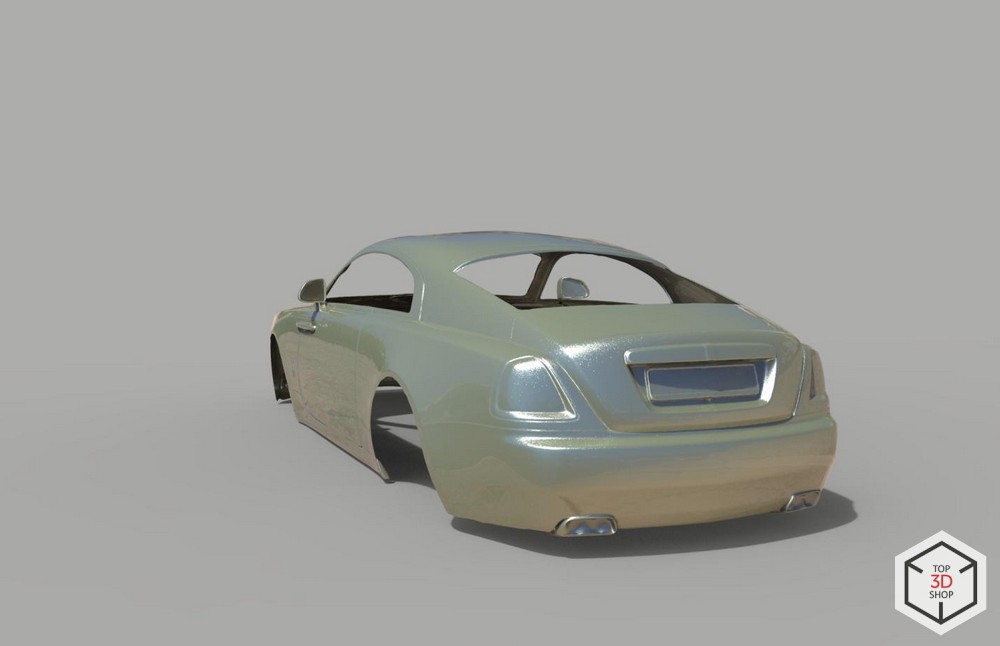
How did before
Before the advent of 3D scanners in the arsenal of engineers, the digitization of three-dimensional objects consisted of manually creating a model in CAD programs based on drawings, measurements, and photographs.
In the tuning and repair of auto photogrammetry methods are not widely used because of the high cost and complexity. Everything was done “by eye”, according to manual measurements and physical casts, which did not contribute to quality.
The appearance of 3D scanners on the market has given impetus to the application of new digital methods in this area.
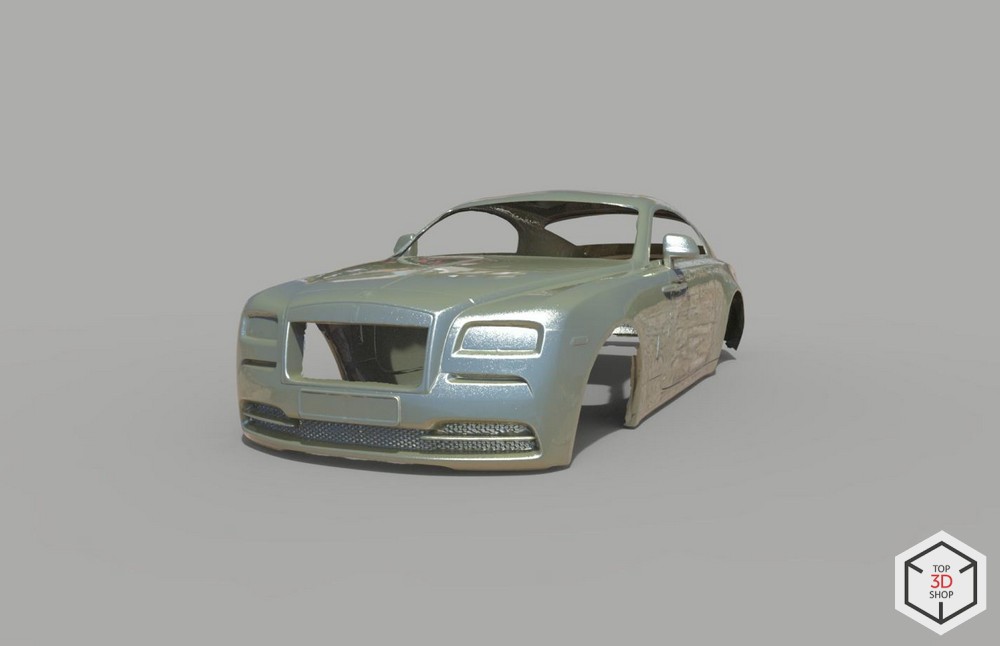
Preparing to scan
Scanning took place in the auto repair shop, as it is not so convenient to scan outside, and street light can prevent scanning with excessive brightness and inconstancy. It should be noted that this time we could scan the car on the street as well, since Eva has its own lighting system, which allows leveling the ambient light, and the day was not very sunny, the sun light did not interrupt the scanner light.
At the appointed time, the car was delivered. The body was slightly dusty, but it was decided not to wash the car before, as the surface would still have to be matted and a little dustiness would give additional haze. In the presence of noticeable dirt, the car, of course, would have to be washed to avoid distortion of the surface geometry.
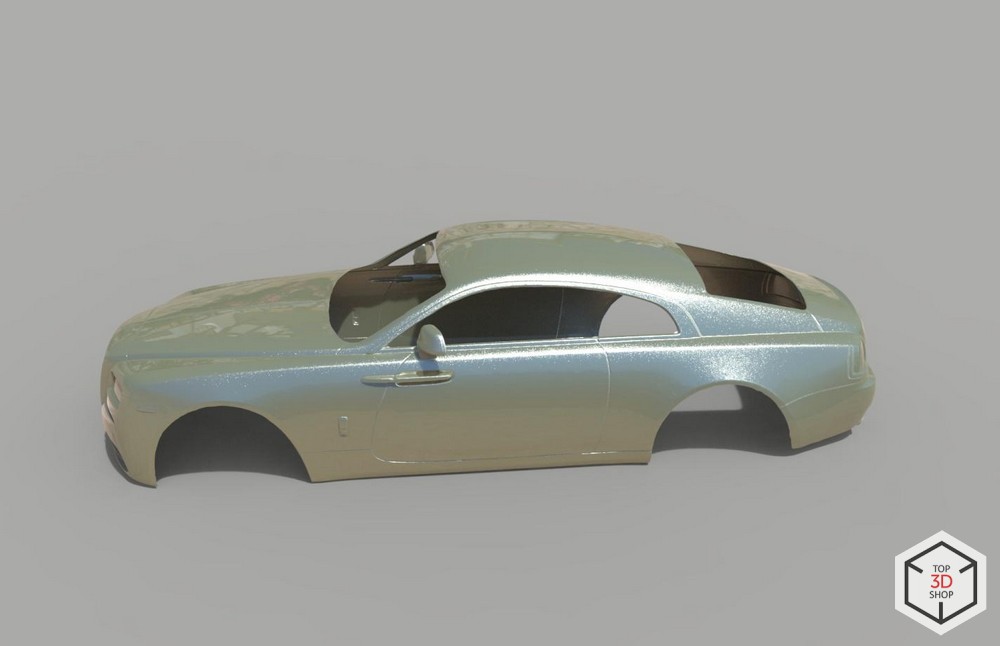
For scanning, two 220-volt sockets are enough, one for a laptop and one for a scanner. The scanner connects to the laptop using a single USB cable.

Scan requires only half of the car, with the capture of both sides in front and behind. That is, we scan the bumper completely, and the rest of the body - only on one side. This is due to the fact that the car is a symmetrical object, and it is faster and easier to mirror one of the halves to get the second than to scan the entire car. Bumper front and rear are required in order to correctly establish the axis of symmetry.
The surface of the car was covered with a thin layer of matting spray to remove the gloss preventing scanning.
For matting we use Helling spray, it is easily washed off from any surface, consists of an alcohol base and something like talcum powder.
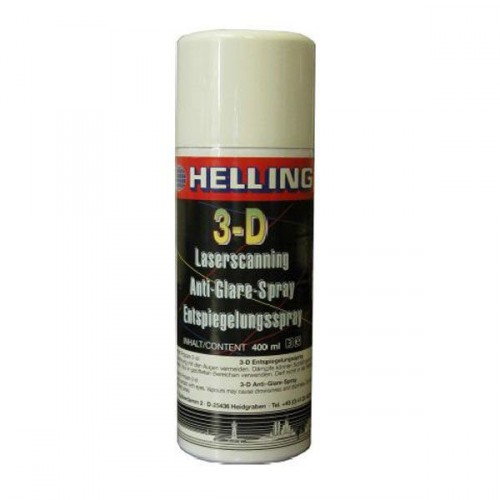
There are also special evaporating sprays that completely disappear from the surface of the object in a few hours.
Another of the training requirements is the use of tags. For cars, it is necessary, since many elements of the body, for example, hood or doors, do not have a rich geometry or texture, and for the scanner in different places look exactly the same, which leads to stitching errors.
Scanning
The scanning process itself is not very interesting - the operator slowly leads the scanner over the surface of the body, at a distance of about 50 cm, and the scanner records the surfaces to be removed using the software installed on the laptop. Periodically it is necessary to interrupt - first, the scanner heats up during operation, so it is advisable to scan in the 5 minutes scan mode - 15 minutes for cooling.
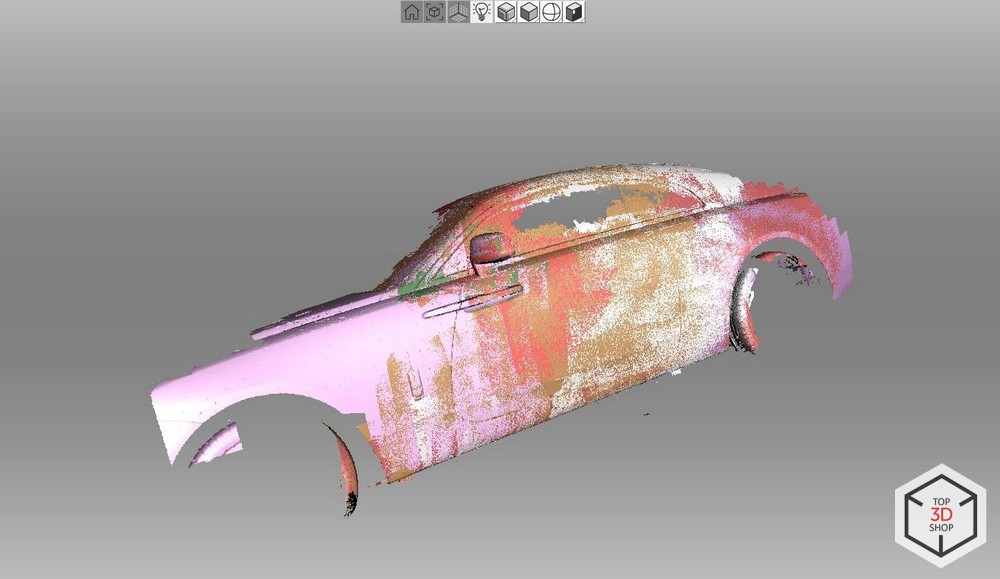
Secondly, the car, and even more so large as Rolls-Royce is a rather large object, the scanner collects a lot of data and a laptop, even a very powerful one, cannot always cope with such a flow of information - some scans have to be unloaded from RAM into a permanent . Therefore, the scan of the car is usually divided into sections that are scanned separately, and then stitched.
At the end of the scan, the car can go to flush out the matting spray and body tags. The project with scans is saved for subsequent assembly.
Stitching scans now occurs mainly in automatic mode, only sometimes there is a need to correct the location of the fragments, if the computer was wrong.
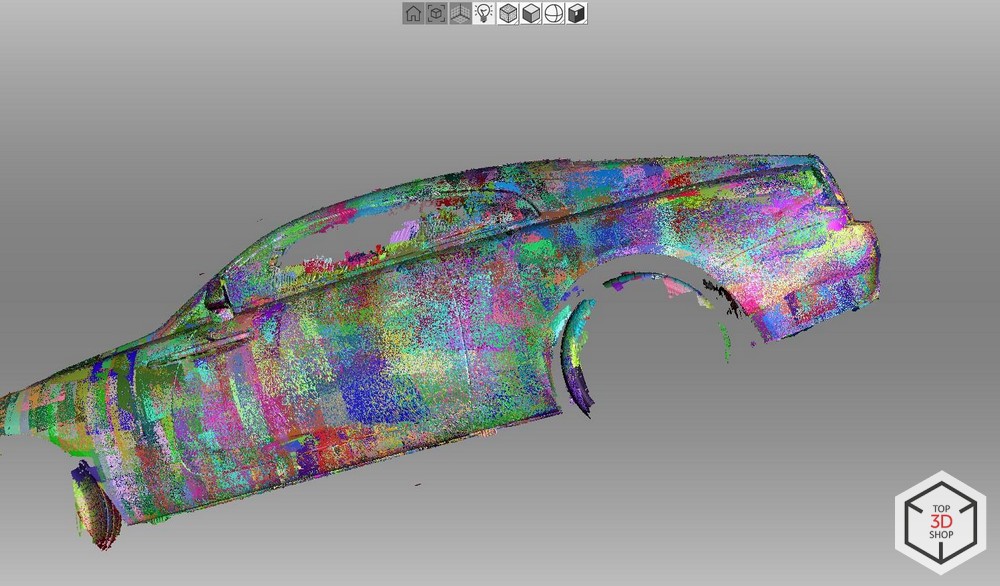
As already mentioned, first separate parts of the body are assembled, in this case we managed to collect half the body at once: the front and the back. And then they are sewn together. During the stitching process, all rubbish is removed - for example, the floor captured by the scanner, the wheels that are not needed on the scan, glass. When both halves are stitched, we get a polygonal half car model. The work of Artec Studio is over.
But working with such a model is not yet possible. First, it is only half the car. And secondly, the design requires a parametric, not a polygonal model of the body.
The first problem can be easily solved in almost any software for modeling polygonal 3D-models. We are looking for an axis of symmetry and a mirror half of the available one. We control over intersecting elements (bumpers), when they ideally converge - we got what we need. You can save the half data separately and drive it through the geometry assembly in Artec Studio using models instead of scans, in this case I did just that, for better accuracy. Then we sew our halves, this can be done both in Artec Studio and in the modeling software. I sewed them into Geomagic Studio, since the next step will be there.

Conversion to CAD is a long and difficult process. A scan is taken and used as a template for building a parametric surface. However, in this case, everything can be made easier. Programs like Geomagic Studio or Geomagic Design use a complex algorithm using heterogeneous rational B-splines. Simply put, the surface is described by a set of parametric curves, between which the surface is stretched. This method does not always work, it cannot process a complex form - it has a low accuracy on such areas as carving or small relief. But for the car body, it fits perfectly.
The miscalculation lasts several hours, but it is much faster than rebuilding the surface in Rhinoceros or SolidWorks. The disadvantage of such a model is that it would be difficult to use it for milling, since the surface is described by a large number of individual parametric sections and the gcode preparation program for milling will process it for quite some time. But they will process it, and not go into an endless cycle, as would happen when working with a polygonal model, in which there are millions of individual sections.
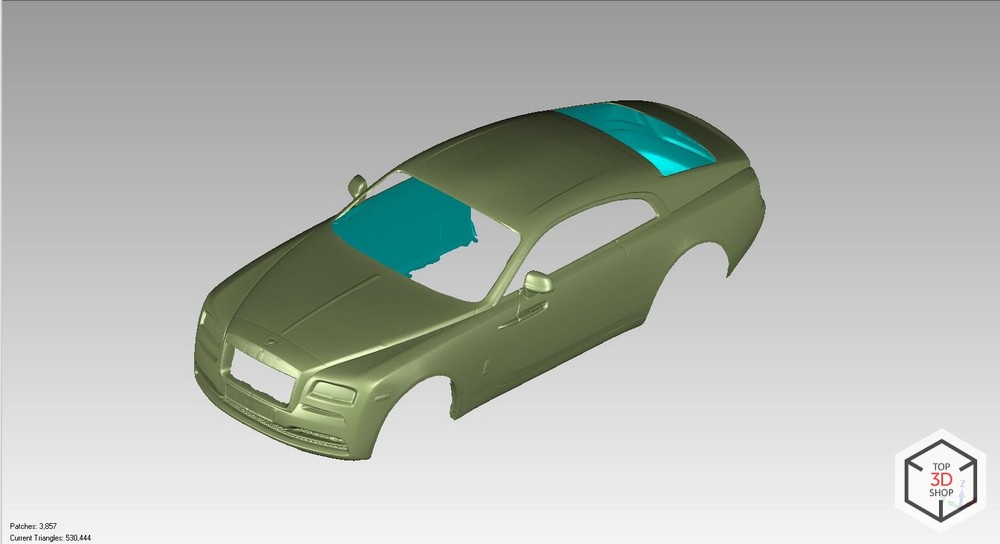
The resulting model was given to a satisfied customer. Now it can be used in parametric modeling as a template to which various tuning elements will be attached.
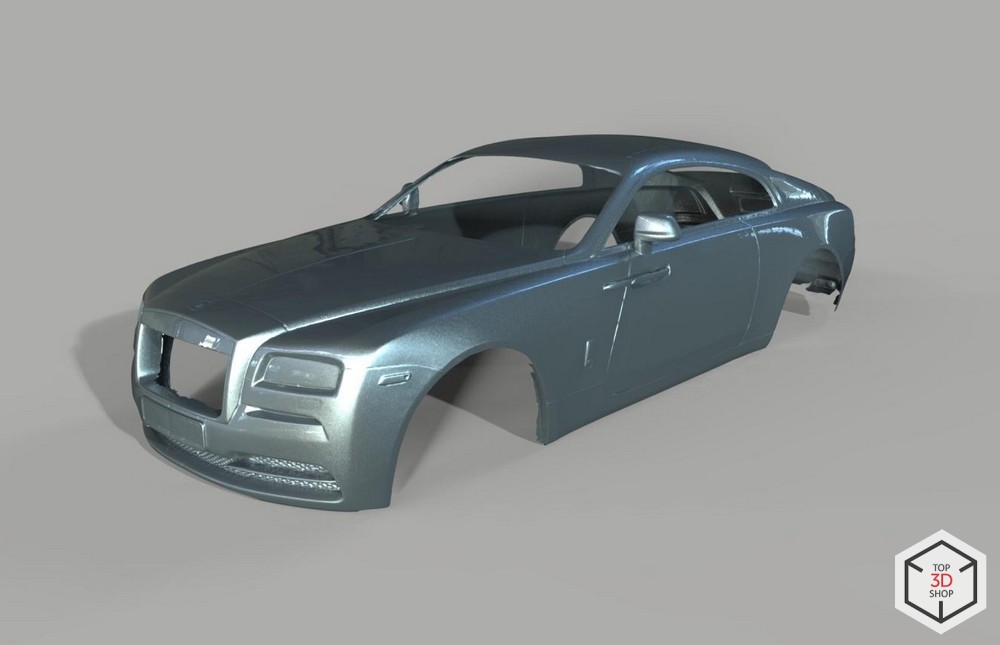
Top 3D Shop provides professional 3D scanning services for cars and other objects. For more information please contact: sales@top3dshop.ru
Want more interesting news from the world of 3D technology?
Subscribe to us in the social. networks:




All Articles